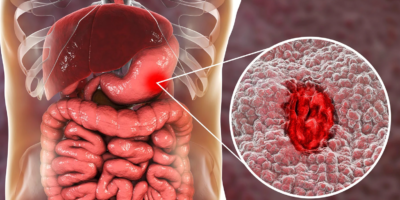Few people make it through the winter without the familiar symptoms—sniffles, sneezes, and scratchy throat. The average adult catches two to four colds a year. Kids get at least twice that many colds. A chief reason is that the more than two hundred viruses that cause colds can survive on surfaces for hours. You push that grocery cart, borrow a pen, put away your kid’s toys and then touch your finger to your nose or eyes, and—presto, you’ve inoculated yourself. Or someone sneezes or coughs a cloud of airborne viruses in your direction. Unless your immune system is in tip-top shape, symptoms follow in two to three days. To reduce the risk of picking up other people’s cold viruses or spreading yours to others, wash your hands often. Although over-the-counter cold medications can decrease congestion, they don’t cure the infection and may, in fact, prolong it. The good news is your kitchen holds a number of feel-better remedies.


1. Throat Tonic
How it works: The hot water is a hydrator that keeps your throat moist and also thins mucus and helps expel it. As you sip, simply breathing in the steam of the warm liquid helps with decongestion. Ginger is antimicrobial, anti-inflammatory, analgesic, immune-enhancing, and an expectorant.
- PREPARATION:
- 1 quart (946 ml) water
- 1 teaspoon (3 g) grated fresh ginger, or ½ teaspoon dried
- ¼ cup (60 ml) fresh lemon juice
- 2 teaspoons (14 g) honey
- DIRECTIONS: Boil the water and then turn off the heat. Add the ginger. Cover and steep for 20 minutes and then strain. Add the lemon juice and honey. Sip the quart of tonic over the course of the day. Reheat as necessary or drink at room temperature.
- YIELD: 01 QUART (946 ML) TONIC
2. Congestion Clearance
How it works: Inhaling steam from the boiling water helps decongest nasal passages. (Breathe in slowly, as steam can burn your nose.) Oil of eucalyptus is an expectorant and antitussive (cough calming). It aids breathing by opening up bronchial tubes, easing congestion, and promoting sputum. It is also antimicrobial.
- PREPARATION:
- 1 quart (946 ml) water
- 2 to 3 drops of eucalyptus essential oil
- DIRECTIONS: Boil the water and pour it into a bowl. Add the eucalyptus essential oil. Cover your head with a clean towel. Lean over the bowl. Inhale through your nose to clear nasal congestion. (To clear lung congestion, inhale through your mouth.) Repeat three to five times a day as needed. Each time, you will need to reheat the water and add fresh plant essential oil. (Plant essential oils are volatile, meaning they vaporize quickly.)
- YIELD: 01 STEAMING SESSION
- NOTE: If you have asthma, try using only steam first. If steam doesn’t make you cough, add 1 drop of eucalyptus oil, working up to 3 drops as tolerated. In some people with asthma, inhaling the vapors from plant essential oils may trigger coughing.
3. Cold Crusher
How it works: There is evidence that garlic stimulates the immune system and may defend against catching a cold. It may also help fight viruses. In one study, participants who took garlic supplements for twelve weeks during the winter experienced a significant reduction in colds and a reduction in the symptoms of those colds that did occur. Ginger is antibacterial, anti-inflammatory, immune-enhancing, and calms coughing. Onions, which are botanical cousins of garlic, are also immune-enhancing, anti-inflammatory, and antimicrobial. The spiciness of horseradish stimulates thin nasal secretions, which helps clear away viruses.
- PREPARATION:
- 1 head garlic, cloves peeled and crushed
- 1 medium-size horseradish root, peeled and coarsely chopped
- 1 finger-size slice of ginger, peeled and coarsely chopped
- Apple cider vinegar
- DIRECTIONS:
Place the crushed garlic cloves, horseradish root, and ginger in a clean, pint-size (475 ml) jar. Cover with apple cider vinegar until the fluid level clears the chopped ingredients by 1 inch (2.5 cm). Close the lid snugly. Shake.
Store in a covered cabinet. After two weeks, the chemicals in the plants will have largely moved into the vinegar. You now have two options. One is to strain and rebottle the vinegar extract and store it in the refrigerator. The second (Gina’s preferred method) is to leave the herbs in the jar and eat them with the vinegar extraction.
Sip 1 to 2 tablespoons (15 to 30 ml) of this mixture at the first sign of cold symptoms. You can dilute the vinegar with herb tea or warm water. If you’re feeling brave, chew a piece of garlic clove. Repeat each day for the first three days of the cold.
- YIELD: ABOUT 16 SERVINGS
4. Gypsy Cold-Combat Tea
How it works: This traditional European tea has been used for hundreds of years to counter symptoms of influenza. These herbs make you sweat (which helps reduce fever). Peppermint reduces respiratory congestion, pain, and headache. The steam can also help clear nasal passages.
- PREPARATION:
- 3 cups (710 ml) water
- 1 tablespoon (2 g) dried peppermint leaves
- 1 tablespoon (2 g) dried yarrow flowers
- 1 tablespoon (2 g) dried elderflowers or elderberries
- Honey (optional)
- DIRECTIONS: Boil the water. Turn off the heat. Add the herbs, cover, and steep for 20 minutes. Rewarm over low heat. Strain, sweeten with honey as desired, and sip. Drink a serving three to six times a day.
- YIELD: 03 SERVINGS
5. Vapor Relief
How it works: Ravensara (Cinnamomum camphora) comes from Madagascar. The tree is the source of camphor, though a different, safer chemotype (a plant with distinct chemical constituents) is used to make the essential oil. It smells much like eucalyptus, but is gentler. Studies show it’s antiseptic, anti-inflammatory, and antioxidant.
- PREPARATION: 1 drop ravensara essential oil
- DIRECTIONS: Tilt the essential oil bottle until a single drop falls onto a facial tissue. Twist the tissue so that the spot of essential oil is at the center and so you can insert that bit of twisted tissue into your nostril. So what if you look a little weird. Breathe deeply ten times and remove. Repeat with a fresh tissue on the other side. Notice the difference.
- YIELD: SINGLE-USE, BUT IT CAN BE REPEATED UP TO FOUR TIMES DAILY WHILE SYMPTOMATIC WITH A COLD.
- NOTE: If you can’t easily find ravensara essential oil, you can use eucalyptus or peppermint essential oil, which is antimicrobial, anti-inflammatory, and decongesting.
Fact or Myth?
- YELLOW NASAL DISCHARGE MEANS YOU’VE DEVELOPED SINUSITIS. Actually, nasal mucus normally starts out clear and thin and becomes yellower as your immune system kicks in. The yellow comes from shed white blood cells and cells lining your nose and other debris. Furthermore, most people with colds do have, as evidenced by CT scans, sinus inflammation.
- BEING OUT IN THE COLD WILL CAUSE YOU TO CATCH COLD. Studies show that’s not true. However, being chilled stresses your body, and people who are under stress are more at risk for the common cold.
- VITAMIN C PREVENTS THE COMMON COLD. It is hard to say. Some studies show success, but many do not. Vitamin C supplements may be effective in people subjected to physical stress, such as performing vigorous exercise in very cold weather.
Lifestyle Tip
- Eat soup. You’ve probably heard that chicken soup is a time-honored remedy against the common cold. Scientists have actually tried to verify why it may be helpful. It turns out that hot chicken soup hastens clearance of nasal mucus and is antiinflammatory (and the immune system’s inflammatory response creates many of the cold’s symptoms). Plus the parsley, mushrooms, onions, garlic, and Italian seasonings (thyme, oregano, rosemary) so often in soup have relevant medical properties. we prefer a modified version that uses additional immune-enhancing herbs, specifically shiitake mushroom and astragalus root. Preliminary research indicates that astragalus may reduce the risk of catching colds.
- If you’re going to use a decongestant, nasal sprays produce fewer side effects than do oral products. they do make it easier to breathe. However, with overuse or continued use (more than a few days), the shrinkage of the mucous membranes is followed by rebound swelling. this rebound stuffiness causes people to reach for the spray bottle, perpetuating a vicious cycle that can be surprisingly hard to break.
- If you or your child is prone to colds, consider consuming fermented foods, such as yogurt, or supplementing with probiotics. Probiotics, live microorganisms with health benefits, have been shown to prevent upper respiratory tract infections, such as colds.
When to see the Doctor
- Respiratory symptoms persist longer than two weeks. The common cold should resolve within seven to ten days.
- You develop a high fever. The common cold causes mild fever, at best.
- You develop pain and greenish-brown discharge from one or both nostrils.






Leave a Reply